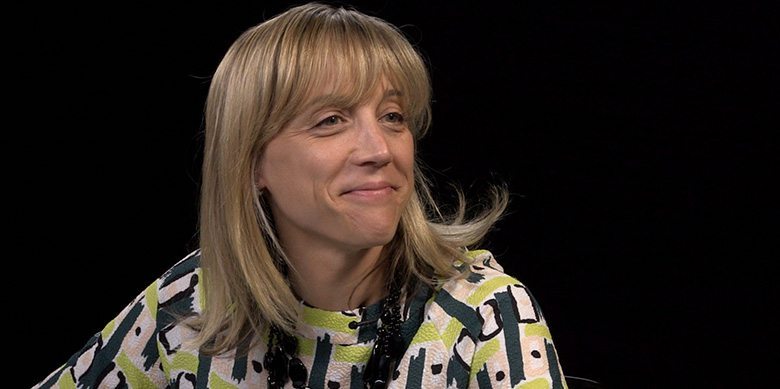Is Mega-Private Equity Becoming a Public Proxy?
Andrea Auerbach, Global Head of Private Investments for Cambridge Associates, discusses the current state of the private equity market, including the surge in distributions back to LPs, and the performance of the largest private equity funds, which is beginning to mirror the average performance of the stock market. Interviewed by David Snow, CEO of Privcap Media.
Transcript
TRANSCRIPT
Is Mega-Private Equity Becoming a Public Proxy?
Privcap: the private equity deal market has been relatively robust, perhaps not as robust as in the sort of 2007, 2008 period. But it’s been robust, and during that time a ton of private equity capital has been raised. Adding to the so called overhang or the dry powder build up. In your view, have you GP’s been exiting at a pace that is getting capital back to the LP’s fast enough?
Andrea Auerbach: Interesting question. So if we look at the history of distributions coming back to LP’s, so obviously at Cambridge Associates we love tracking lots of things, and we were the first to define and measure the overhang. And I’m just thrilled that we’re all now closely paying attention to the amount of dry powder waiting to get deployed. In terms of distributions, distributions have been peaking, they peaked according to our information, in 2014 for private equity and venture capital globally at around 260 billion dollars. But we’ve had 200 billion dollar distribution years since, from 2013 through 2017, 2018. So we have had feast, we have been absolutely been in a feast distribution situation for the last six years. And if you think about seven years of feast, seven years of famine, one of the things that we’re concerned about is because of this unprecedented level of distributions, we’re actually expecting a return to normal.
A little longer explanation for this, but if you think about fundraising and investment activity in private equity, so funds have, fundraising in private equity has continued to go up and to the right in the last five or six years, right? And distributions have also been very significant. But, if you think about the typical cycle of capital call vs capital distributed, our industry if I go all the way back to 1991, from 1991 to 2010, we’ve had more years where more capital has been called down from the industry than returned. And the reason for that David is because we are, private investing is a growth industry. Funds, more and more funds are constantly raised that are larger than the funds before. And when the larger fund capital gets called down the industry goes net negative. Goes net called, if that makes sense. And so what we’re anticipating is that the distributions have been great, and I believe with all the funds, the record fundraising years we’ve been having, as that capital gets called down, we will once again go into a net negative where more capital is being called than being given back.
Now the one caveat I’m going to put on everything I just said, is that dividend recaps are alive and well. As long as interest rates are staying low, and the capital leverage, leverage loan volume is flowing, then most private equity GP’s have a great way to hit the buzzer on their IRR clock, and return capital back to LP’s in that capacity. So that’s sort of the one X factor I will put on distributions going forward.
Privcap: And of course, what’s happening with all this capital that’s getting returned to LP’s this feast as you call it, they’re turning right back around and committing it to new, often times larger private equity funds, right?
Andrea Auerbach: Yes. Yes. The Cuisinart of capital activity, within private investing. There’s a lot of capital coming back in to our private investment arena. And on a global basis, we were tracking 2018 as the highest year ever at 454 billion for 2018, right? Now what’s interesting to me as I look at that capital, and something we’ve been thinking about quite a bit, is the rise or the continued shadow that mega funds tend to cast over the entire market. And when we look at mega funds, and I’ll define them as funds with 10 billion or more in commitments, megafunds, they comprise a third of the overhang, right? And they comprise a third of invested capital.
Andrea Auerbach: And this is information that we have as Cambridge Associates through all the hard work that we do, scouring the market and gathering information. And so a lot of that capital is going to the mega fund category. Fundraising more than 10 billion, and they cast a very long shadow over the market. However, as I say that, overhanging capital continues to flow to our merging managers who are starting their journey, and that’s obviously a fairly interesting and dynamic space as well.
Privcap: What are these mega funds and private equity firms in general, are going to do with all that capital. Is there an influence from the relative dearth of IPOs I mean they’re have been high profile IPOs, but in general fewer successful companies are interested in going public, and they’re more likely to be interested in staying private longer and therefor maybe find a home in some of these very large funds and funds like entities, like SoftBank. Do you see a connection there?
Andrea Auerbach: Yes. Yes we do, we do. In fact, one of the observations that we have is that, as mega funds continue to raise more and more capital, $25 billion, probably $30 and $40 billion sized funds, and I mean Soft Bank obviously is way out there, sort of lapped the field their fund size. But I do believe larger funds obviously are in our future, and one of the things we’ve been thinking about is they do, larger funds need larger companies. And with the shrinking, at least US public equity stock market, the number of publicly traded companies is halved over the last 20 years. And a lot of companies currently, claim to not have an interest in going public, and so these very very large pools of capital can provide homes for these very very large companies.
I think the challenge, if you look at the returns of these mega funds, is that they do seem to indicate as a group, inter merging public proxy. And in fact an analysis that we’ve done shows that on a 3, 5, 10 and 12 and three quarter year basis, which is really when you started having enough mega funds to sort of put a yard stick and really see the kind of performance. Is that the performance of this cohort is neck and neck with public market returns, and then when you look at the correlations David, what you see is that the correlations of these very large funds of 10 billion or more, are very highly correlated with the public markets.
And I’m going to contrast that with the really small funds, funds of less than a billion, funds of less than 500 million, their correlation is half that of the mega fund cohort. So, I think we’re entering into an interesting time in private investments as we always are. But I do believe these mega funds as they continue to increase their capital, are going to start to, and already are according to the information that we have, really start to provide that public proxy exposure.
So the good news is, these mega funds will provide you with exposure you can’t get in the public market, and that is a differentiated source of return. That’s a positive. The concern of, what am I willing to pay for that return strain to go back to our earlier conversation is a very interesting question. And then, is a public market proxy sufficient, given the dispersion of returns I could get access to in lower registers of the market. So lots of interesting questions right now, and a lot to think about.
Privcap: So are you saying that there’s a chance that over the next ten years the largest private equity firms perform about neck and neck with the S&P 500 or some other public index like that?
Andrea Auerbach: Well I mean according to the historical information we’ve been looking at, they kind of already are? And David that’s not to say look, with every cycle that we’ve encountered in private investments, and there have been several right? 1990, 91, it could continue and go through the peaks and valleys of private investing, as new funds sizes, as new funds high water marks appear, several managers always manage to punch through the return ceiling that we thought they were going to be stuck under. And deliver old school private equity returns, right? So I’m certainly not, I’m concerned about the cohort as a whole, but as you know and I know investors don’t invest in the market per se, they make very specific manager selections. And so we do believe that certain of these rising mega funds will continue to deliver on their stated return expectations. Overall there’s some interesting elements emerging that are worth considering.
Privcap: Right. There is no megafund index. You can’t buy that. You have to select specific managers within that cohort.
Andrea Auerbach: I mean that’s how on the private investment side, that is exactly how you would do it. Obviously some of these are publicly traded, and so you can’t access in certain situations they’re public equity, but on the private side you are typically very specifically selecting certain of these funds for investment, for your portfolio. And so you know, don’t expect your return experience will be different from the cohort that I’ve been quoting.



